Commenti / Domande (120)
![]() Simone Schwarz ha scritto:
Simone Schwarz ha scritto:
Hallo,ich möchte den Damenpullover Sigrid stricken.Sind in dem Muster die Randmaschen mit eingezeichnet? Muster A 1 beginnt z.B. mit einer linken Masche.Ist das die Randmasche? L.G.Simone
08.11.2024 - 20:01DROPS Design ha risposto:
Liebe Frau Schwarz, ja genau, schlagen Sie keine zusätzliche Maschen an. Die ersten 8 M werden wie im A.1 und die letzten 8 Maschen wie in A.2 gestrickt. Viel Spaß beim Stricken!
11.11.2024 - 07:47
![]() Shelley ha scritto:
Shelley ha scritto:
At displacement, I get that the pattern moves but mine did not match up. Once I do the inc 1 after the edge garter, what am I doing with that increased st on next rows? I did garter, inc and then A3 but does not look right ?
26.01.2024 - 05:53DROPS Design ha risposto:
Dear Shelley, could this video help you? We are showing there how to work A.3 and displacement. Happy knitting!
26.01.2024 - 08:22
![]() Shelley ha scritto:
Shelley ha scritto:
I am up to A3 but if I knit the pattern it does not match up for A1 and A2? I am adding the single garter and my rs row worked but the ws row does not?
21.01.2024 - 21:43DROPS Design ha risposto:
Dear Shelley, A.3 is just one stitch more than A.1 and A.2, you cast on 2 stitches at the end of the next 2 rows and work 1 edge stitch in garter stitch, then A.3 (work the 2nd new stitch as the first in A.3) over A.1/ and at the end of the row work A.2 as before finish with the first of the new sts as the last st in A.3 + 1 edge st in garter stitch (remaining sts will be worked as before. Happy knitting!
22.01.2024 - 10:34
![]() Heather Nicholls ha scritto:
Heather Nicholls ha scritto:
When displacing the pattern either side of the back, how do I work the extra stitches into the 9 stitch diagram, A3? I work the garter stitch edge stitch and have more than 9 stitches to work. Should I repeat the first few stitches of the A3 diagram? Thank you in advance. I’m confused! Heather Nicholls
08.01.2024 - 00:35DROPS Design ha risposto:
Dear Heather, you don't have any extra stitches, just "displace" or "move" pattern A.3. A.3 will always have 9 stitches; you decrease 1 stitch and increase 1 stitch to move the pattern but they aren't worked in the pattern. Happy knitting!
08.01.2024 - 00:45
![]() Denise Rudnicki ha scritto:
Denise Rudnicki ha scritto:
The schematic shows the shoulders sloping toward the neck, but there is no shoulder shaping in the pattern. Have I missed something?
10.08.2022 - 14:13DROPS Design ha risposto:
Dear Mrs Rudnicki, it looks like you are right, there are no decrease for the shoulders, the lines on the sides should be straight. Thanks for noticing. Happy knitting!
11.08.2022 - 10:08
![]() Cath Rault ha scritto:
Cath Rault ha scritto:
I’m with Madiloo! Could you possibly add other photos?? I think part of the problem with this is the back is completely different to the front? The “displacement” is a term i haven’t come across in a knitting pattern before, and I have spent ages trying to work out what you mean. I find the way you write the patterns infuriating, but I’m sure I’ll get the hang of it eventually. I. Love your designs, but the instructions drive me nuts!!!!
20.03.2022 - 19:53DROPS Design ha risposto:
Dear Mrs Rault, we don't have this jumper anymore so we can unfortunately not add any further picture; but this video shows how to work diagrams A.2 and A.3 as well as how to work the displacement and should help you to understand how to do. Happy knitting!
21.03.2022 - 09:42
![]() Jeannine Karas ha scritto:
Jeannine Karas ha scritto:
What is the recommended ease for this pattern?
15.09.2021 - 06:41DROPS Design ha risposto:
Dear Mrs Karas, measure a similar garment you have and like the shape and compare these measurements to those in the chart, that's the best way to find out the matching size. Read more here. Happy knitting!
15.09.2021 - 07:18
![]() Tania ha scritto:
Tania ha scritto:
Can you please clarify how many balls of yarn are required in total for this pattern XXL and XXXL sizes
02.07.2021 - 02:01DROPS Design ha risposto:
Dear Tania, you will always find the total amount of yarn required in grams in the header, ie in XXL: 500 g and in XXXL: 550 g /50 g a ball DROPS Air = 10 balls in XXL/11 balls in XXXL. Happy knitting!
02.07.2021 - 07:48
![]() Ula ha scritto:
Ula ha scritto:
Hello, I would like to ask about how the photo of the jumper matches the pattern. By looking at the photo, I cannot really see the displacement of A3. Is that correct that the jumper in the photo does not include the displacement? Thank you for clarifying!
24.09.2020 - 19:23DROPS Design ha risposto:
Dear Ula, both picture and pattern includes displacement - you start to displace A.3 after the vent, and repeat the displacement on every 4th row o*a total of 17 to 24 times depending on the size. Happy knitting!
25.09.2020 - 08:54
![]() Elise ha scritto:
Elise ha scritto:
Comment faire les augmentations avec le diagramme A-4 ? Merci
11.01.2020 - 14:50DROPS Design ha risposto:
Bonjour Elise, les augmentations de A.4 doivent se tricoter de sorte que les côtes continuent, vous devez ainsi toujours avoir 1 maille point mousse (=1ère m de A.4), 1 maille jersey (=2ème maille de A.4). Vous allez donc tricoter les augmentations soit comme la 1ère soit comme la 2ème maille. Bon tricot!
13.01.2020 - 09:13
Sigrid#sigridsweater |
|||||||
|
|
|||||||
Maglione DROPS lavorato ai ferri con falso raglan, spacco e motivo a punto fantasia sulle spalle e maniche in ”Air”. Taglie: S - XXXL.
DROPS 166-18 |
|||||||
|
M LEGACCIO (avanti e indietro): Lavorare tutti i f a dir. 1 “costa” a m legaccio = 2 f dir. MOTIVO: Vedere i diagrammi A.1-A.4. I diagrammi mostrano tutti i f del motivo visti dal diritto del lavoro. SUGGERIMENTO PER GLI AUMENTI: Aumentare 1 m facendo 1 gettato. Sul f successivo lavorare i gettati a ritorto, cioè lavorarli nel filo dietro della m invece di quello davanti per evitare buchi. NOTA: Incorporare mano a mano gli aumenti nel diagramma A.4. SUGGERIMENTO PER LE DIMINUZIONI: Diminuire 1 m come segue: tutte le diminuzioni vengono fatte dal diritto del lavoro! Diminuire come segue dopo A.3: lavorare 2 m insieme a dir. Diminuire come segue prima di A.3: lavorare fino a quando rimangono 2 m prima di A.3, passare 1 m a dir senza lavorarla, 1 m dir, accavallare la m passata sopra quella appena lavorata. ---------------------------------------------------------- MAGLIONE: Lavorato avanti e indietro sui f circolari e cucito alla fine. Il davanti è più corto del dietro. DIETRO: Avviare 95-98-101-107-113-116 m con i f circolari n° 5 mm con Air. Lavorare a coste come segue: A.1 (= 8 m), 1 m dir, * 2 m rov, 1 m dir *, ripetere *-* fino a quando rimangono 8 m sul f, A.2 (= 8 m). Continuare in questo modo avanti e indietro fino a quando il lavoro misura 4 cm. Sul f successivo dal diritto del lavoro, passare ai f circolari n° 5,5 mm e lavorare come segue: A.1, m rasata sulle 79-82-85-91-97-100 m successive, ALLO STESSO TEMPO distribuire 15-14-15-17-21-20 diminuzioni in modo uniforme, A.2 = 80-84-86-90-92-96 m sui f in totale. Continuare a m rasata, lavorare A.1 e A.2 a ogni lato come prima fino a quando il lavoro misura 22 cm per tutte le taglie. FARE ATTENZIONE ALLA TENSIONE DEL LAVORO! Alla fine dei 2 f successivi avviare 2 nuove m (indicano lo spacco) = 84-88-90-94-96-100 m. Ora lavorare A.3 (= 9 m) su A.1 e A.2, prima/dopo la m di vivagno a M LEGACCIO a ogni lato – leggere la spiegazione sopra. Quando il lavoro misura 26-24-24-23-23-23 cm, iniziare lo spostamento di A.3 verso il centro dietro. Lavorare 1 m di vivagno a m legaccio, aumentare 1 m – LEGGERE IL SUGGERIMENTO PER GLI AUMENTI, A.3, diminuire 1 m – LEGGERE IL SUGGERIMENTO PER LE DIMINUZIONI, m rasata fino a quando rimangono 2 m prima del prossimo A.3, diminuire 1 m, A.3, aumentare 1 m, 1 m di vivagno a m legaccio. Ripetere lo spostamento di A.3 ogni 4 f altre 17-19-20-21-22-24 volte. NOTA: Gli aumenti sono sempre prima/dopo la m di vivagno a ogni lato. ALLO STESSO TEMPO quando il lavoro misura 60-61-62-63-64-65 cm, avviare 1 nuova m alla fine dei 2 f successivi per gli scalfi = 86-90-92-96-98-102 m. Continuare il motivo come prima aprima/dopo le m di vivagno a m legaccio e della m a m rasata a ogni lato. Quando il lavoro misura 74-76-78-80-82-84 cm, intrecciare le 24-24-24-26-26-26 m centrali per il collo e finire ogni spalla in modo separato. Sul f successivo dal collo, intrecciare 1 m = 30-32-33-34-35-37 m rimaste sulla spalla. Quando il lavoro misura 76-78-80-82-84-86 cm, lavorare 1 “costa” su tutte le m. Intrecciare. Lavorare l’altra spalla nello stesso modo. DAVANTI: Avviare e lavorare come per il dietro. Quando il lavoro misura 12 cm, lavorare come segue: alla fine dei 2 f successivi avviare 2 nuove m (indicano lo spacco) = 84-88-90-94-96-100 m. Ora lavorare A.3 (= 9 m) su A.1 e A.2 e lavorare 1 m di vivagno a m legaccio – LEGGERE LA SPIEGAZIONE SOPRA – a ogni lato. Quando il lavoro misura 16-14-14-13-13-13 cm, iniziare lo spostamento di A.3 verso il centro davanti come sul dietro. ALLO STESSO TEMPO quando il lavoro misura 50-51-52-53-54-55 cm, avviare 1 nuova m alla fine dei 2 f successivi per gli scalfi = 86-90-92-96-98-102 m. Continuare il motivo all’interno della m di vivagno a m legaccio e 1 m a m rasata a ogni lato. Quando il lavoro misura 54-56-58-59-61-63 cm, trasferire le 14-14-14-16-16-16 m centrali su un fermamaglie e finire ogni spalla in modo separato. Poi intrecciare le m su ogni f dal collo come segue: 3 m 1 volta, 2 m 1 volta e 1 m 1 volta = 30-32-33-34-35-37 m rimaste per la spalla. Lavorare la m di vivagno verso il collo a m legaccio. Quando il lavoro misura 66-68-70-72-74-76 cm, lavorare 1 costa su tutte le m. Intrecciare. Lavorare l’altra spalla nello stesso modo. MANICA: Lavorata avanti e indietro sui f circolari. Avviare 39-41-43-43-43-45 m con i f circolari n° 5 mm con Air. Lavorare a coste come segue: 1 m di vivagno a m legaccio, 1 m dir, * 1 m rov, 1 m dir *, ripetere *-* fino a quando rimane 1 m, 1 m di vivagno a m legaccio. Quando le coste misurano 4 cm, passare ai f circolari n° 5,5 mm e continuare il motivo come segue: 1 m di vivagno a m legaccio, lavorare l’ultima m di A.4, ripetere A.4 fino a quando rimane 1 m, 1 m di vivagno a m legaccio. Quando il lavoro misura 10 cm, aumentare 1 m all’interno della m di vivagno a m legaccio a ogni lato. Lavorare gli aumenti con il motivo A.4. Ripetere gli aumenti ogni 5½-4½-4½-3½-3-3 cm altre 6-7-7-9-11-11 volte = 53-57-59-63-67-69 m. Quando la manica misura 46 cm per tutte le taglie, lavorare l’arrotondamento della manica a f accorciati come segue dal diritto del lavoro: lavorare fino a quando rimangono 8-9-9-10-11-12 m, girare e lavorare fino a quando rimangono 8-9-9-10-11-12 m, girare e lavorare fino a quando rimangono 17-19-19-21-22-23 m, girare e lavorare fino a quando rimangono 17-19-19-21-22-23 m. Girare e lavorare tutte le m sul f, girare e lavorare su tutte le m. Intrecciare a dir dal diritto del lavoro. Lavorare un’altra manica. CONFEZIONE: Cucire i margini delle spalle. Cucire le maniche al corpo all’interno della m di vivagno a m legaccio. Cucire sotto le braccia e i margini dei lati all’interno della m di vivagno a m legaccio ma lasciare 12 cm per lo spacco sulla parte inferiore del corpo (cioè 22 cm sul dietro e 12 cm sul davanti). BORDO DEL COLLO: Iniziare dal centro dietro e riprendere circa 120-130 m (comprese le m sul fermamaglie) con i f circolari n° 5 mm. Lavorare 1 giro dir, e allo stesso tempo aggiustare il n° di m a 75-75-75-84-84-84. Poi lavorare a coste (= 1 m dir/2 m rov) per 3 cm. Intrecciare con dir su dir e rov su rov. |
|||||||
Spiegazioni del diagramma |
|||||||
|
|||||||
 |
|||||||
 |
|||||||
Avete terminato questo modello?Allora taggate le vostre foto con #dropspattern #sigridsweater o inviatele alla #dropsfan gallery. Avete bisogno di aiuto con questo modello?Troverete 31 video tutorial, una sezione per i commenti/domande e molto altro guardando il modello su www.garnstudio.com © 1982-2025 DROPS Design A/S. Ci riserviamo tutti i diritti. Questo documento, compreso tutte le sue sotto-sezioni, è protetto dalle leggi sul copyright. Potete leggere quello che potete fare con i nostri modelli alla fine di ogni modello sul nostro sito. |
|||||||







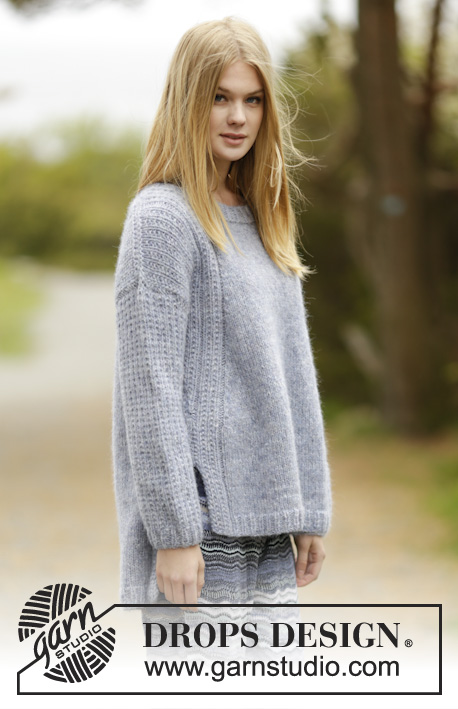



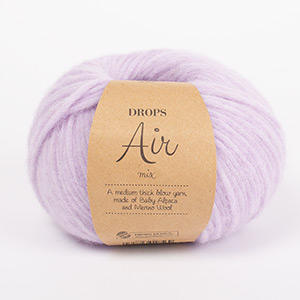
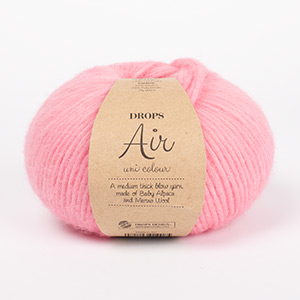




















































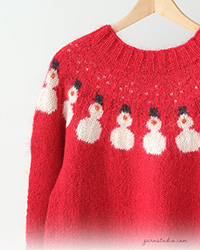
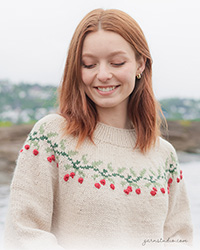
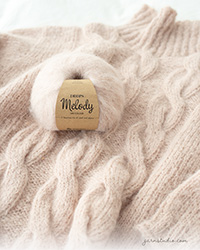
Lasciare un commento sul modello DROPS 166-18
Noi saremmo felici di ricevere i tuoi commenti e opinioni su questo modello!
Se vuoi fare una domanda, fai per favore attenzione a selezionare la categoria corretta nella casella qui sotto per velocizzare il processo di risposta. I campi richiesti sono indicati da *.